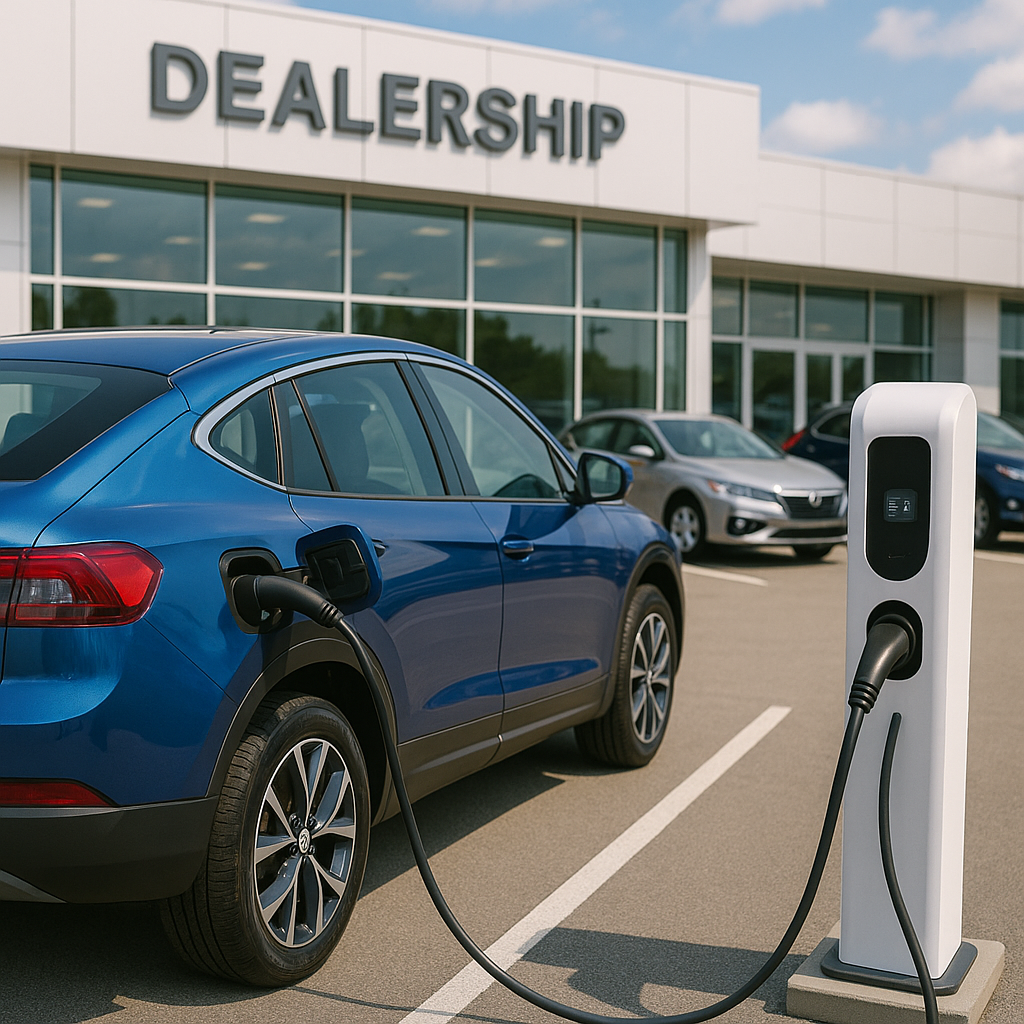Challenges to Innovation: Custom Software's Response to eMobility Industry Pitfalls

An electric revolution is underway on roads across America, as more and more drivers adopt electric vehicles and other eMobility options. These sustainable solutions are more efficient, affordable, and environmentally friendly than legacy transportation; however, this Great Electrification is not without its own unique challenges.
Electric vehicles currently face a lack of charging infrastructure relative to petroleum infrastructure. EVs can’t go as far on a charge as conventional vehicles can on a tank of gas; recharging an electric vehicle also takes longer than refilling gas-fueled vehicles. Then, of course, there are also interoperability gaps between different EVs and charging stations to overcome.
The challenges are not insubstantial—but luckily, technological innovation is rising to meet the moment. S44 develops eMobility solutions to help encourage a sustainable future; with our EV solutions, we can connect vehicle owners with matching charging stations, increase interoperability, optimize charge times, and so much more.
The American EV market is expected to grow exponentially over the coming years: from 4 million EVs on the road now to 27 million by 2030—and 92 million by 2040. Billions of dollars are pouring into the market, driving technological advances and infrastructure expansion. But it will take intentional innovation and broad cooperation to deliver the full-scale societal shift on the horizon.
To that end, let’s unpack some of the aforementioned current challenges—and how custom software solutions like those from S44 are working to solve them.

1. Inadequate eMobility Charging Infrastructure: Scarcity of Charging Stations and Accessibility Challenges
As mentioned, one of the eMobility revolution’s biggest challenges is a scarcity of charging stations. For an expensive electric vehicle to be useful, it has to be easy to charge. But in many areas, it’s disappointingly difficult to find a nearby facility.
That lack of availability or convenience impinges on electric vehicles’ overall attractiveness. Many people still don’t have as much confidence in electric vehicles as they do in gas vehicles; making EVs difficult to charge does not help to ease those concerns.
Part of the difficulty, of course, has been knowing where to place EV stations for maximum efficiency. But new predictive modeling software can provide a solution. Planning charging station placement using location data can help companies see common EV traffic—and place chargers accordingly, quite literally meeting EV drivers where they are.
Advanced new software also enables smart grid integration. A smart grid is an upgraded electricity network that includes functionality for monitoring and managing energy use. With the help of custom coding, the grid can automatically detect energy availability in electric vehicles in order to maximize battery longevity.
A related notion, “load management,” entails balancing the amount of supply and demand in the grid. Again custom software comes to the fore, charging electric vehicles at opportune times to reduce costs and protect against power outages. At peak use times the software helps reduces supply demand; then when there’s more power available the system distributes supply evenly among charge points.
Essentially, custom software helps implement scalable and flexible charging networks that can scale to keep pace with a dynamic eMobility market. This adaptability provides enough coverage to meet the needs of prospective EV drivers; as the network grows, a modular architecture allows new functionality to respond.
2. Addressing Range Anxiety: Alleviating Concerns About Electric Vehicle Driving Range
We touched earlier on the idea of “range anxiety”: the stress many drivers experience regarding whether their EV batteries will last long enough to reach their destinations without a charge.
The range of electric vehicles has been on an upward trajectory over recent years; however, they can’t yet drive far enough on one charge for everyone’s needs. Suppose you’re thinking of doing a long drive, but you’re not quite sure you can make it to the next charge point. That puts a damper on your appetite for the drive, or even owning an EV for that matter.
Range anxiety, therefore, inhibits many decisions on electric vehicles—and EV adoption as a whole. In this case, custom software can alleviate range anxiety by offering intelligent range prediction algorithms. Calculating how far the vehicle can go, the software gives drivers confidence that they’ll reach the final destination or another charging station.
The route planning may take into account where nearby public charging stations are and how fast they charge, for example. Then it could point you toward a fast-charging station within the range left in your EV battery. Instead of range anxiety, you have a comfortable lunch break while the vehicle recharges.
Custom software can go beyond regular route planning to personalize recommendations for individual drivers. As an application observes each driver, it can make data-driven adjustments to the route. Drivers’ unique route preferences can be considered; furthermore, an aggressive driver might run through the battery differently than a cautious driver, so they would differ in range. Customized recommendations for where and when to charge could therefore extend EV distances while alleviating anxiety.
3. Accelerating Charge Time: Overcoming Lengthy Charging Durations with Faster Solutions
With the technology now on the market, electric vehicles charge more slowly than refueling a gas vehicle. Drivers want to drive, not wait for their vehicles. And for fleet operators, it’s a business necessity to keep vehicles on the road.
How many shoppers reconsider electric vehicle ownership due to sluggish charging? And among those who do make the purchase, they have to contend with lower satisfaction and more frustration.
Custom software accelerates charge time by calculating optimal recharge algorithms. The code figures out when it’s most efficient to plug in by analyzing data from multiple sources, using vehicle telematics and electrical grid data to accelerate charging for electric and plug-in hybrid electric vehicles.
Another capacity of charging software is called vehicle-to-grid (V2G) technology for bidirectional energy flow. A V2G solution like S44’s detects when the electric vehicle has an abundance of battery reserves. The software then causes the vehicle to discharge extra electricity back into the grid.
With V2G, drivers can earn a profit while strengthening the energy grid and facilitating the use of renewables. And with the grid more balanced, it’s safer to charge other EVs. More investment into battery technologies will unlock further innovations to accelerate charging times.

4. Ensuring Interoperability: Resolving Compatibility Issues Between Charging Stations and Vehicles
Charging stations and electric vehicles have to talk to each other, regardless of brand. In terms of custom software, the best response is to develop standardized communication protocols.
S44 stands as a contributing member of the EVRoaming Foundation, and organization that brings together transportation and technology giants including Shell, Volvo, and Google to simplify charging interoperability. The foundation is responsible for eMobility charging protocols like the Open Charge Point Interface (OCPI)—the freely available international standard allowing electric vehicles to roam between charge point operators.
S44’s custom software powers a large EV charging network with native OCPI support. But beyond that, we’re also furthering the development of data exchange technology to help electric vehicle owners recharge and pay at charge points operated by different vendors—overcoming compatibility issues.
Overcome eMobility Challenges with S44’s Custom Software
The eMobility transition faces challenges from limited charging infrastructure and range anxiety to slow charge times and incomplete interoperability. But custom software helps address all of these challenges when created by a reputable developer.
S44 is a leading developer of custom eMobility software solutions—solutions that help thousands of drivers charge their EVs efficiently today. From back-end systems for major charging networks to mobile apps for end-user charging, S44’s custom software is bringing eMobility to a wider audience.
Get in touch to learn more about how we can help you deliver an optimized digital experience through custom software.







